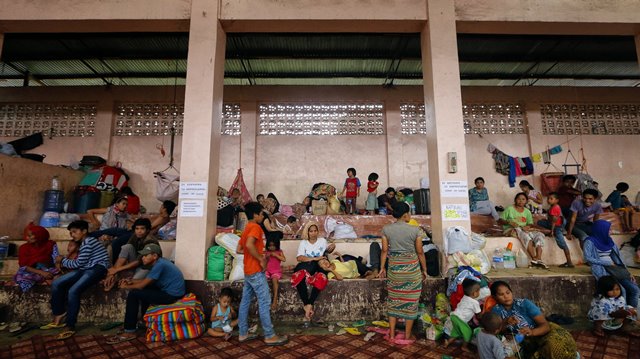Digging Up Dirt: Investigating Marawi’s Rehabilitation Plans

Evacuees at the Balo-i Gymnasium 4 in Lanao del Norte. Photo from the Philippine Information Agency.
A YEAR after the Maute group laid siege to the Islamic city of Marawi in Lanao del Sur, and more than six months after the end of the fighting, there are still some 3,000 residents of the city displaced in temporary shelters in evacuation centers where they have lived since their hasty departure from their homes in May 2017.
Government action has lagged on the various aspects of the huge infrastructure buildup as the target date for completion of the new Marawi looms, set for 2022, before the end of President Duterte’s term of office. Plans have yet to be finalized and revealed, even as the project faces the challenge of rising costs and the still undetermined source of funds.
CMFR cheers several media reports for calling attention to lapses, investigating and reporting on the government’s management and administration of this most urgent project to rebuild the war-torn city.
Missed Focus
Most reports focused on announcements made by the president and other experts about the rehabilitation plans and related issues. President Duterte hyped up China’s readiness to support an ambitious plan for a city center. Reports have said little about the expressed needs of the people who will live there, as most media has followed Duterte’s lead.
CMFR cheers the exceptions:
News.ABS-CBN.com reported the complaint of concerned Maranaos who claimed they have been left out of the talks, although they were invited to attend planning meetings about rebuilding Marawi. Civilian group Ranaw Multi-Sectoral Movement said in a statement that the actual residents of the city are being left out in the plans and consultation laid out by Task Force Bangon Marawi (“‘Left out’ Maranaos seek people-led Marawi rehab”).
The group further said that plans have been made without their participation and it neither represents their will to rise from the devastation nor reflect the culture of their people. Their ancestors have resisted foreign invasions throughout history and they insist their right to lead the rebuilding efforts of their land and not just by engineers and architects who are not familiar with their history and culture.
In a report by The Manila Times, Rep. Mauyag Papandayan Jr. of Lanao del Sur called out Task Force Bangon Marawi’s lack of plans for the residents that would be displaced should the government push through with their plans to build a market, promenade and cultural city in what was once a residential area in Marawi.
In the same report, Task Force Bangon Marawi Spokesperson James Purisima admitted that while the awarding of contracts are underway, the government has yet to release the PHP17 billion Marawi rehabilitation funds (“Gov’t yet to release P17-B Marawi rehab fund – OCD”).
Questionable Contracts
CMFR also cheers media’s quick pick-up of the inclusion of companies with anomalous records in the consortium engaged for the project.
Rappler scored the inclusion of the China State Construction Engineering Corporation (CSCEC) and China Geo Engineering Corporation (CGC) which were tapped to take part in the rebuilding of the ruined city. The two Chinese firms were blacklisted by the World Bank because they were part of a cartel system which manipulated the bidding process of projects funded by WB. Winners were pre-selected and losing bidders were compensated for their participation. Rappler’s report also said that CSCEC was accused of failing to pay around PHP712.74 million in taxes from 2003 to 2006 (“China firms in Marawi rehab once blacklisted by World Bank”).
The Philippine Center for Investigative Journalism (PCIJ), however, pointed out that these companies have yet to be awarded the contracts because they have yet to submit the required documents. In its extensive listing of problematic issues weighing on the Marawi project, PCIJ also cited other lapses (“A patchwork of sketchy plans, loose rules, uncertain funding”).
PCIJ revealed that the government awarded a combined total of PHP306 million in contracts to seven other Filipino companies tied to political clans. These contractors are tasked to build transitional shelter units and roads of residents of Marawi City and affected nearby villages in Lanao del Sur (“Firms of clans among winners of Marawi road, housing deals”).
The report explained that eight contracts were bidded out by the National Housing Authority (NHA) and the Department of Public Works and Highways – Region X (DPWH Region X). Five contracts to rebuild roads in Marawi were awarded to companies that are connected to three political families who are also allies of President Rodrigo Duterte.
The ruins of Marawi represent a huge challenge to the Duterte government. The media cannot resort to rote reporting, recording only official statements. Journalists must get ahead of the players, identifying critical issues, investigating and demanding follow ups from different sources. Instead of sticking to official statements, reporters should seek the displaced and give voice to their hopes of being allowed finally to return home.
Leave a Reply